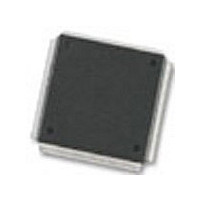MC68376BAMFT20 Freescale Semiconductor, MC68376BAMFT20 Datasheet - Page 112

MC68376BAMFT20
Manufacturer Part Number
MC68376BAMFT20
Description
Manufacturer
Freescale Semiconductor
Datasheet
1.MC68376BAMFT20.pdf
(434 pages)
Specifications of MC68376BAMFT20
Cpu Family
68K/M683xx
Device Core
ColdFire
Device Core Size
32b
Frequency (max)
20MHz
Interface Type
QSPI/SCI
Program Memory Type
ROM
Program Memory Size
8KB
Total Internal Ram Size
7.5KB
# I/os (max)
18
Number Of Timers - General Purpose
2
Operating Supply Voltage (typ)
5V
Operating Supply Voltage (max)
5.25V
Operating Supply Voltage (min)
4.75V
On-chip Adc
16-chx10-bit
Instruction Set Architecture
RISC
Operating Temp Range
-40C to 125C
Operating Temperature Classification
Automotive
Mounting
Surface Mount
Pin Count
160
Package Type
PQFP
Lead Free Status / Rohs Status
Not Compliant
Available stocks
Company
Part Number
Manufacturer
Quantity
Price
Company:
Part Number:
MC68376BAMFT20
Manufacturer:
FREESCAL
Quantity:
245
- Current page: 112 of 434
- Download datasheet (7Mb)
5.6.4.2 LPSTOP Broadcast Cycle
5.6.5 Bus Exception Control Cycles
5-34
MOTOROLA
Low-power stop mode is initiated by the CPU32. Individual modules can be stopped
by setting the STOP bits in each module configuration register, or the SIM can turn off
system clocks after execution of the LPSTOP instruction. When the CPU32 executes
LPSTOP, an LPSTOP broadcast cycle is generated. The SIM brings the MCU out of
low-power stop mode when either an interrupt of higher priority than the stored mask
or a reset occurs. Refer to 5.3.4 Low-Power Operation and 4.8.2.1 Low-Power Stop
(LPSTOP) for more information.
During an LPSTOP broadcast cycle, the CPU32 performs a CPU space write to ad-
dress $3FFFE. This write puts a copy of the interrupt mask value in the clock control
logic. The mask is encoded on the data bus as shown in Figure 5-14. The LPSTOP
CPU space cycle is shown externally (if the bus is available) as an indication to exter-
nal devices that the MCU is going into low-power stop mode. The SIM provides an in-
ternally generated DSACK response to this cycle. The timing of this bus cycle is the
same as for a fast termination write cycle. If the bus is not available (arbitrated away),
the LPSTOP broadcast cycle is not shown externally.
An external device or a chip-select circuit must assert at least one of the DSACK[1:0]
signals or the AVEC signal to terminate a bus cycle normally. Bus error processing oc-
curs when bus cycles are not terminated in the expected manner. The SIM bus monitor
can be used to generate BERR internally, causing a bus error exception to be taken.
Bus cycles can also be terminated by assertion of the external BERR or HALT pins
signal, or by assertion of the two signals simultaneously.
Acceptable bus cycle termination sequences are summarized as follows. The case
numbers refer to Table 5-13, which indicates the results of each type of bus cycle ter-
mination.
• Normal Termination
• Halt Termination
— DSACK is asserted; BERR and HALT remain negated (case 1).
— HALT is asserted at the same time or before DSACK, and BERR remains
negated (case 2).
BERR during the LPSTOP broadcast cycle is ignored.
15
0
14
0
Figure 5-14 LPSTOP Interrupt Mask Level
13
0
12
0
SYSTEM INTEGRATION MODULE
11
0
10
0
9
0
8
0
NOTE
7
0
6
0
5
0
4
0
3
0
2
IP MASK
1
LPSTOP MASK LEVEL
0
USER’S MANUAL
MC68336/376
Related parts for MC68376BAMFT20
Image
Part Number
Description
Manufacturer
Datasheet
Request
R
Part Number:
Description:
Manufacturer:
Freescale Semiconductor, Inc
Datasheet:
Part Number:
Description:
Manufacturer:
Freescale Semiconductor, Inc
Datasheet:
Part Number:
Description:
Manufacturer:
Freescale Semiconductor, Inc
Datasheet:
Part Number:
Description:
Manufacturer:
Freescale Semiconductor, Inc
Datasheet:
Part Number:
Description:
Manufacturer:
Freescale Semiconductor, Inc
Datasheet:
Part Number:
Description:
Manufacturer:
Freescale Semiconductor, Inc
Datasheet:
Part Number:
Description:
Manufacturer:
Freescale Semiconductor, Inc
Datasheet:
Part Number:
Description:
Manufacturer:
Freescale Semiconductor, Inc
Datasheet:
Part Number:
Description:
Manufacturer:
Freescale Semiconductor, Inc
Datasheet:
Part Number:
Description:
Manufacturer:
Freescale Semiconductor, Inc
Datasheet:
Part Number:
Description:
Manufacturer:
Freescale Semiconductor, Inc
Datasheet:
Part Number:
Description:
Manufacturer:
Freescale Semiconductor, Inc
Datasheet:
Part Number:
Description:
Manufacturer:
Freescale Semiconductor, Inc
Datasheet:
Part Number:
Description:
Manufacturer:
Freescale Semiconductor, Inc
Datasheet:
Part Number:
Description:
Manufacturer:
Freescale Semiconductor, Inc
Datasheet:











